
 Gun Maxim, ·303 Inch - Side elevation
Gun Maxim, ·303 Inch - Side elevation Gun Maxim, ·303 Inch - plan, with cover removed
Gun Maxim, ·303 Inch - plan, with cover removed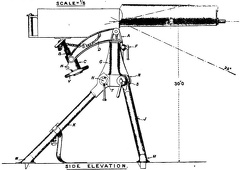 Mounting Tripod ·303 Inch, Maxim Gun Mark
Mounting Tripod ·303 Inch, Maxim Gun Mark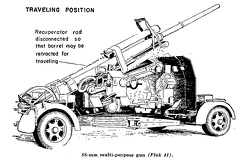 Travelling Position
Travelling Position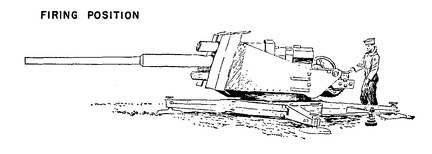 Firing Position
Firing Position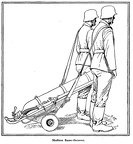 Medium flame-thrower
Medium flame-thrower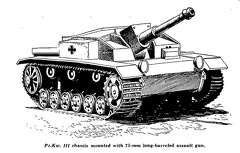 Panzer
Panzer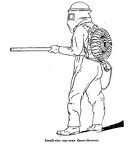 Small-size one-man flame-thrower
Small-size one-man flame-thrower 15-mm aircraft cannon
15-mm aircraft cannon 20-mm aircraft cannon
20-mm aircraft cannon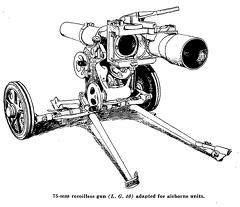 75-mm recoilless gun
75-mm recoilless gun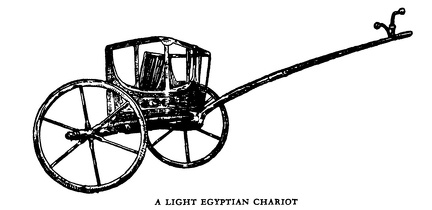 A Light Egyptian Chariot
A Light Egyptian Chariot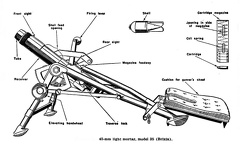 45 mm light mortar
45 mm light mortar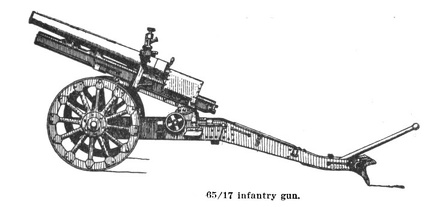 65-17 Infantry gun
65-17 Infantry gun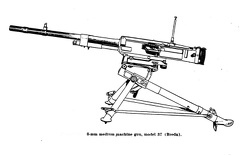 8-mm medium machine gun
8-mm medium machine gun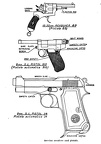 Service Revolver and Pistols
Service Revolver and Pistols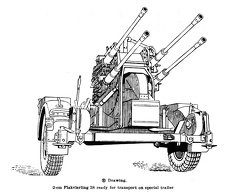 2 cm Flakvierling 38
2 cm Flakvierling 38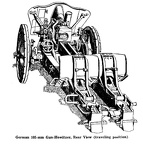 German 105-mm Gun-Howitzer
German 105-mm Gun-Howitzer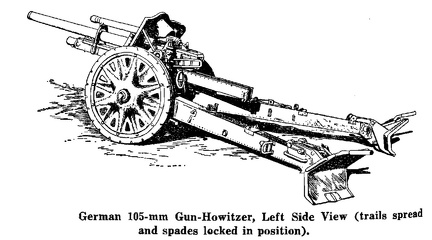 German 105-mm Gun - Howitzer
German 105-mm Gun - Howitzer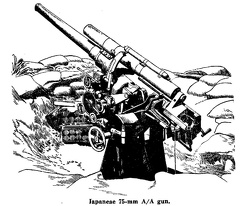 Japanese 75-mm Anti-Aitcraft gun
Japanese 75-mm Anti-Aitcraft gun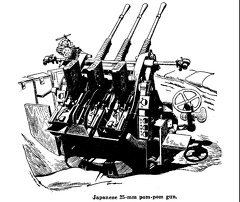 Japanese 25-mm pom-pom gun
Japanese 25-mm pom-pom gun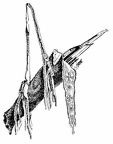 Weapons
Weapons Musketeer wearing a bandolier
Musketeer wearing a bandolier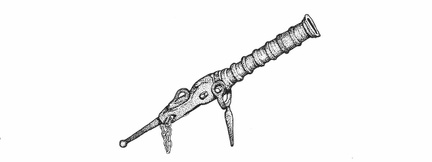 Patrero
Patrero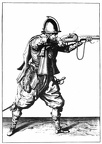 A seventeenth century musketeer
A seventeenth century musketeer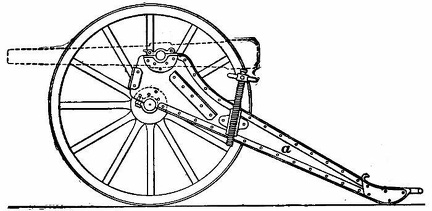 The 1.65-Inch Hotchkiss Mountain-Gun Carriage
The 1.65-Inch Hotchkiss Mountain-Gun Carriage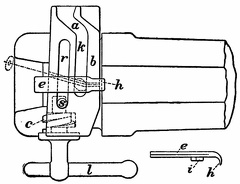 The 1.65-Inch Hotchkiss Mountain-Gun Mechanism
The 1.65-Inch Hotchkiss Mountain-Gun Mechanism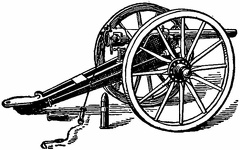 The 1.65-Inch Hotchkiss Mountain-Gun
The 1.65-Inch Hotchkiss Mountain-Gun Two braves
Two braves Indian and Mound-builder Spear-heads
Indian and Mound-builder Spear-heads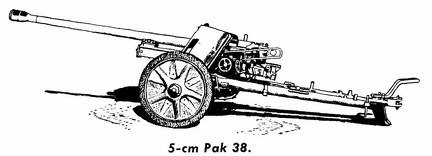 5-cm Pak 38
5-cm Pak 38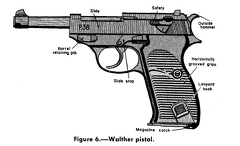 Walther pistol
Walther pistol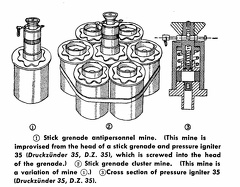 Stick grenade antipersonnel mine
Stick grenade antipersonnel mine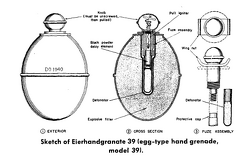 Sketch of Eierhandgranate 39 (egg-type hand grenade, model 39)
Sketch of Eierhandgranate 39 (egg-type hand grenade, model 39)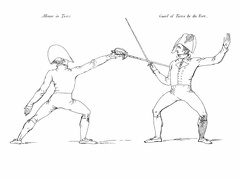 50
50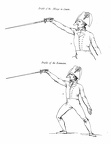 40
40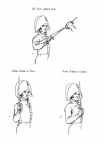 48
48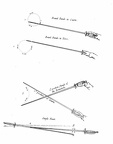 33
33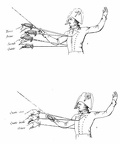 Positions for the use of the sword
Positions for the use of the sword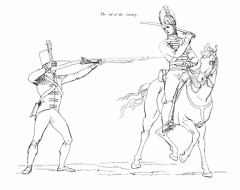 The Cut of the Cavalry
The Cut of the Cavalry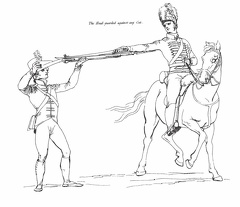 The Head guarded against any cut
The Head guarded against any cut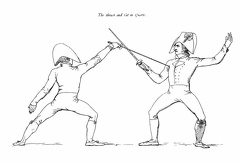 The Cut and Thrust in Quarte
The Cut and Thrust in Quarte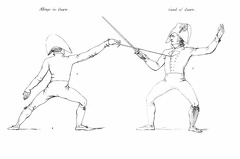 Quarte
Quarte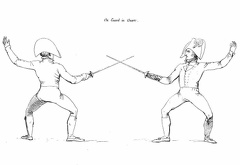 On guard
On guard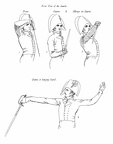 Front View of the Guards
Front View of the Guards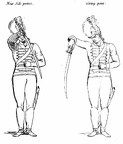 Near Side protect and Giving Point
Near Side protect and Giving Point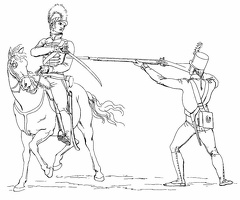 The Situation of the Cavalry man on the near side
The Situation of the Cavalry man on the near side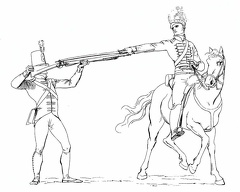 The Cavalry man making point to the right
The Cavalry man making point to the right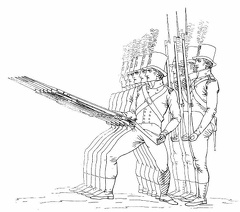 The Bayonet Exercise
The Bayonet Exercise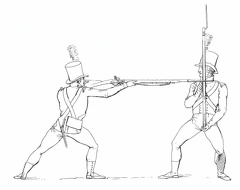 Allonge
Allonge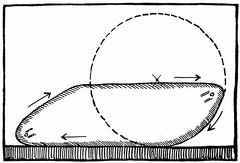 Diagram Showing Adaptation to the 'Large-Wheeled Tractor' Idea
Diagram Showing Adaptation to the 'Large-Wheeled Tractor' Idea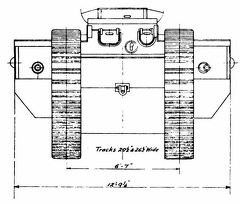 General Arrangements of Mark V. Tank—Front View
General Arrangements of Mark V. Tank—Front View General Arrangement of Mark V. Tank—Sectional Plan
General Arrangement of Mark V. Tank—Sectional Plan General Arrangement of Mark V. Tank—Sectional Elevation
General Arrangement of Mark V. Tank—Sectional Elevation Gallo-Roman Sword and Horn
Gallo-Roman Sword and Horn Gallo-Roman Weapons
Gallo-Roman Weapons A Matchlock and a Firelock, or Fusil (17th Century)
A Matchlock and a Firelock, or Fusil (17th Century) A 'Vase' or 'Pot-de-fer'
A 'Vase' or 'Pot-de-fer' Submarine Mine laid by the Russians in the Crimean War
Submarine Mine laid by the Russians in the Crimean War Russian Mine laid in the Baltic in the Crimean War
Russian Mine laid in the Baltic in the Crimean War



